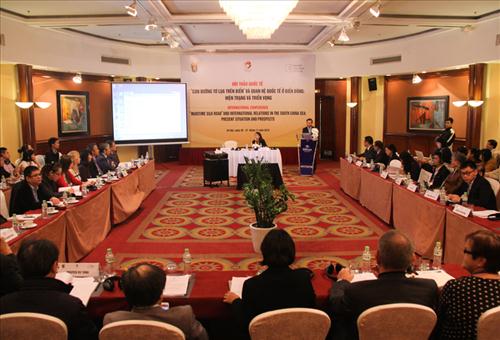
With the theme "The Silk Road on the Sea" and international relations in the East Sea: Current status and prospects", the workshop is a scientific forum for domestic and international researchers, analysts and strategists to exchange new research contents, updated perspectives and propose appropriate solutions for resolving current disputes in the East Sea.
The workshop attracted scientists from China, India, Japan, the Philippines, the United States and Vietnam. Taking place over two days (November 26 and 27), with 6 discussion sessions, at the workshop, delegates focused on discussing the following topics: China's 'maritime silk road' strategy; History and current status of international relations in the East Sea; Forecasting trends in relationsEast Seain the near future.
The '21st Century Maritime Silk Road - MSR' and 'One Belt, One Road' are initiatives proposed by China in 2013. According to the Chinese government's statement, the Maritime Silk Road will serve the maritime development of countries along the route, expand maritime trade as well as promote prosperity in East and South Asia. This road starts from seaports in the coastal area of China, the main axis goes through the South China Sea along the Strait of Malacca, opens branches through Lombok and Sunda (Indonesia), and then along the Indian Ocean in the north to the Persian Gulf, the Red Sea, the Gulf of Aden to the Atlantic Ocean.
To better understand the 'maritime silk road' and its impact on international relations in the East Sea today, please follow the interview between a Vietnam Television reporter and Professor-Doctor Pham Quang Minh, Vice Rector of the University of Social Sciences and Humanities - Vietnam National University, Hanoi.
Author:According to VTV.vn
Newer news
Older news